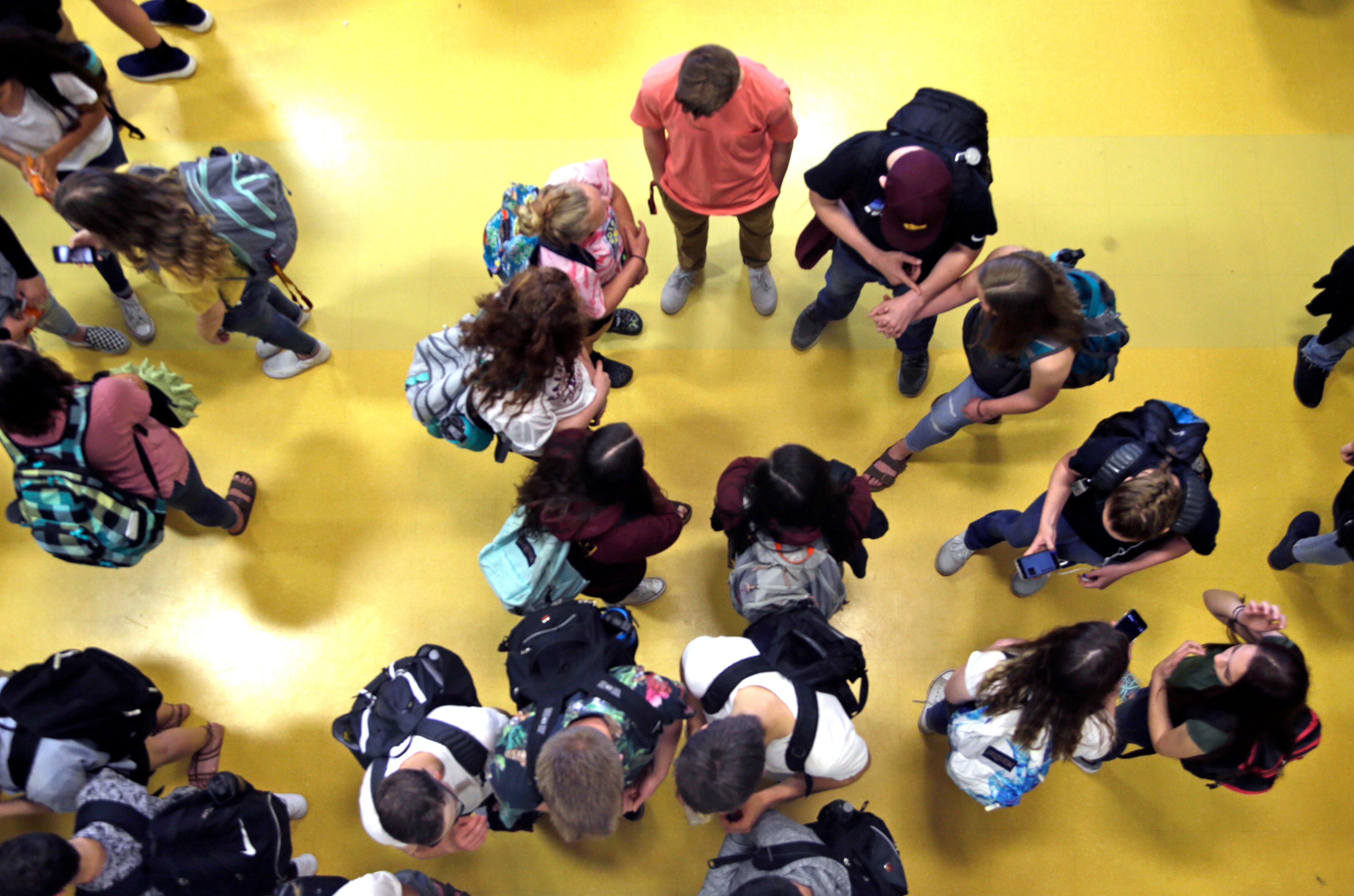High schoolers' mental health shows small improvement in a US government survey
A government survey shows small signs of improvement in the mental health of U.S. teenagers

Your support helps us to tell the story
From reproductive rights to climate change to Big Tech, The Independent is on the ground when the story is developing. Whether it's investigating the financials of Elon Musk's pro-Trump PAC or producing our latest documentary, 'The A Word', which shines a light on the American women fighting for reproductive rights, we know how important it is to parse out the facts from the messaging.
At such a critical moment in US history, we need reporters on the ground. Your donation allows us to keep sending journalists to speak to both sides of the story.
The Independent is trusted by Americans across the entire political spectrum. And unlike many other quality news outlets, we choose not to lock Americans out of our reporting and analysis with paywalls. We believe quality journalism should be available to everyone, paid for by those who can afford it.
Your support makes all the difference.There are small signs of improvement in the mental health of U.S. teenagers, a government survey released Tuesday said, but the share of students — particularly girls — feeling sad and hopeless remained high.
From 2021 to 2023, the portion of high school students who reported feelings of persistent sadness or hopelessness declined from 42% to 40%, according to the Centers for Disease Control and Prevention report. More than 20,000 students were surveyed at school in the spring of 2023.
Among girls, the percentage reporting persistent sadness or hopelessness fell from 57% to 53%. The share of girls reporting they had seriously considered attempting suicide edged downward from 30% to 27%.
The COVID-19 pandemic disrupted many school activities, increased isolation among youth and may have contributed to the 2021 findings on mental health. But long-term trends also reflect a worsening of mental health among teenagers, particularly girls.
___
EDITOR’S NOTE: This story includes discussions of mental health. If you or someone you know needs help, reach out to the national suicide and crisis lifeline at 988, or the National Alliance on Mental Illness by calling 1-800-950-6264 or texting “NAMI” to 741741.
___
Social media’s emphasis on appearance and body image contributes to the pressures on girls' mental health, said Dr. Anisha Abraham of Children’s National Hospital in Washington, D.C., and a spokesperson for the American Academy of Pediatrics.
In 2023, 77% of students said they used social media several times a day, with girls more likely than boys to use social media that often. Sixteen percent of high school students said they'd been electronically bullied during the past year through texting, Instagram, Facebook or other social media. Girls and LGBTQ+ students were more likely to report electronic bullying.
“Open conversations at home with caregivers and parents are really important,” Abraham said. Parents who notice teens feeling hopeless or pulling away from normal activities should take those signals seriously and make sure they “get in for counseling or further screening.”
___
The Associated Press Health and Science Department receives support from the Howard Hughes Medical Institute’s Science and Educational Media Group. The AP is solely responsible for all content.